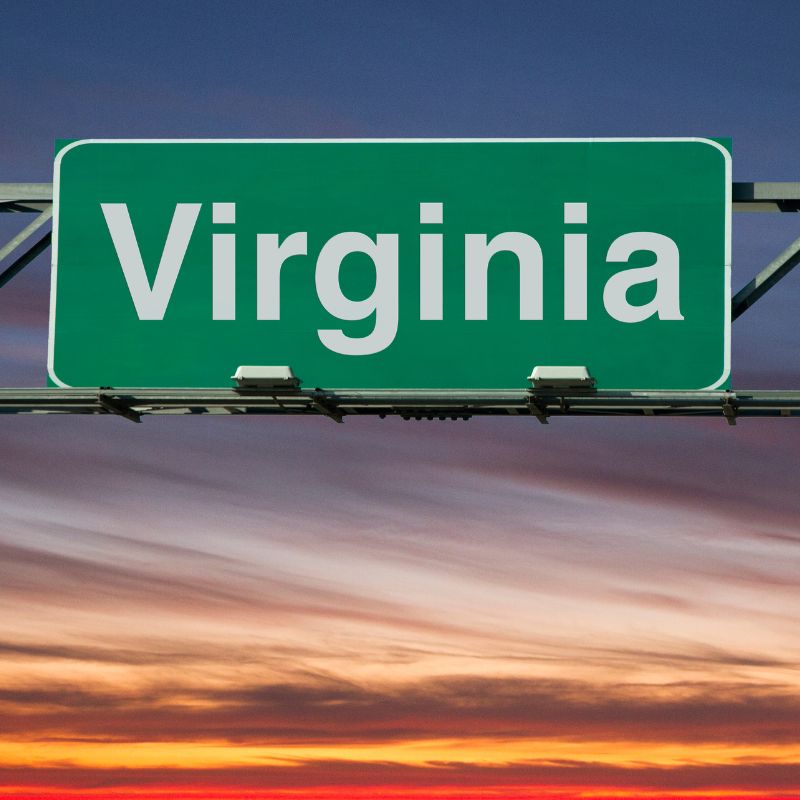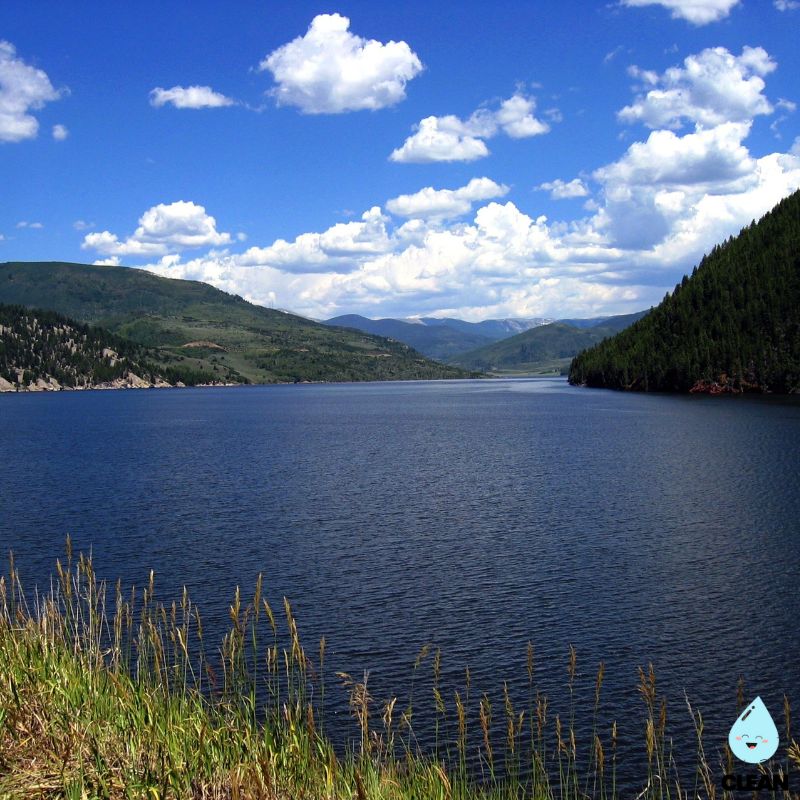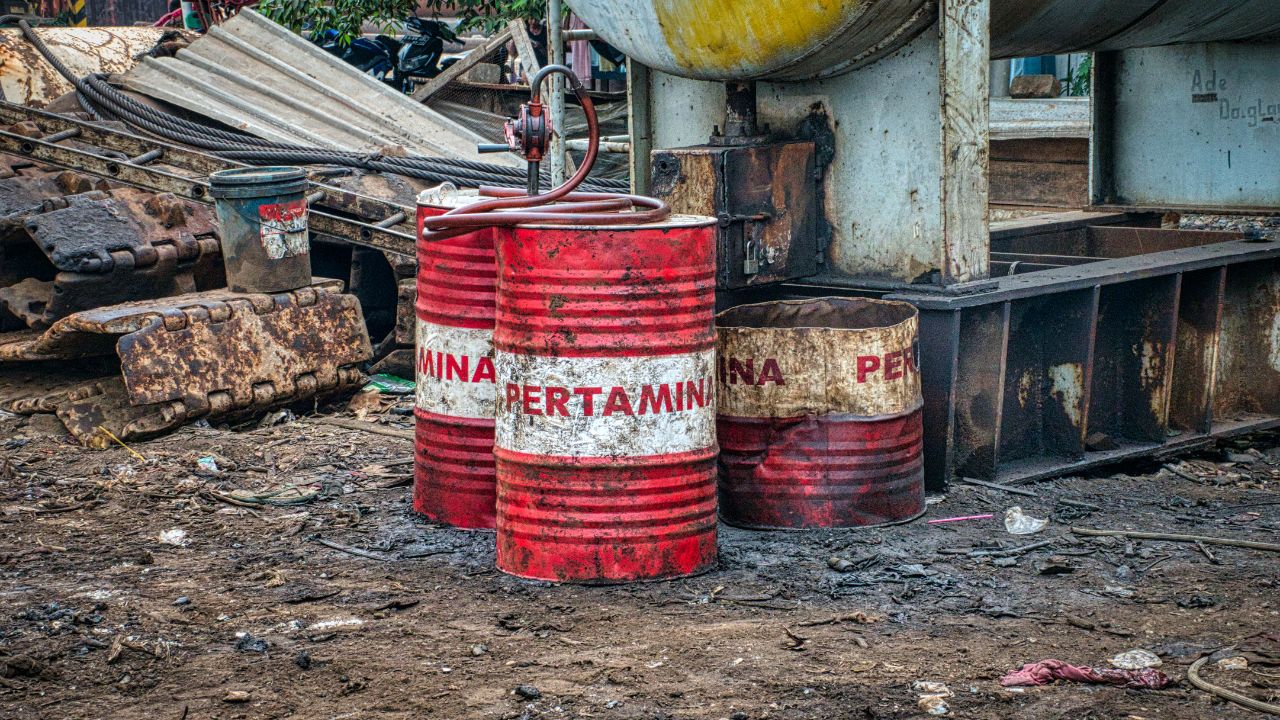Virginia Water Quality at a Glance
PFAS concerns growing
Is Virginia Water Safe to Drink?
Generally Safe, But With Growing Concerns – Virginia’s water typically meets federal and state safety standards, but PFAS contamination affects 26 utilities serving 2.5 million residents. Key issues include PFOA/PFOS detection above health guidelines, disinfection byproducts (haloacetic acids, trihalomethanes), and localized contamination from military installations, industrial sources, and agricultural runoff. Recent incidents include odor advisories and private well contamination from petroleum chemicals.
⚠️ Key Concerns for Virginia Residents
- PFAS “Forever Chemicals”: Found in 26 utilities statewide, affecting 2.5 million residents; military bases like Chincoteague requiring $2.5M treatment systems
- Disinfection Byproducts: Haloacetic acids and trihalomethanes found above EWG health guidelines in multiple systems
- Localized Contamination: Franklin County petroleum chemical contamination affecting 18 homes; Rapidan Service Authority odor incidents requiring advisories
- Private Wells at Risk: Over 1 million Virginians on private wells lack PFAS monitoring; 8% of wells exceed manganese health advisories
Read the full report below for detailed analysis, city-specific data, and actionable recommendations for Virginia residents.
Virginia – The Old Dominion – Water Quality Report 2025: PFAS Testing, Infrastructure Concerns & Safety across your state
Virginia’s water infrastructure serves approximately 8.6 million residents across diverse geographical regions, from the Blue Ridge Mountains in the west to the Chesapeake Bay in the east. The Commonwealth operates through a complex network of over 2,800 public water systems, ranging from large municipal utilities like Norfolk’s systems serving hundreds of thousands of customers, to smaller community systems providing essential services to rural areas. Virginia’s water sources include the James, Rappahannock, York, and Potomac river systems, along with the Potomac Aquifer and numerous reservoirs that supply both urban centers and agricultural communities.
Despite abundant water resources, Virginia faces significant infrastructure challenges amplified by rapid population growth, particularly in Northern Virginia and the Tidewater region. According to recent infrastructure assessments, Virginia’s drinking water infrastructure faces aging systems, funding needs, and emerging contaminant concerns including PFAS “forever chemicals.” The Commonwealth has received substantial federal infrastructure investments from the Bipartisan Infrastructure Law to address these challenges, focusing on drinking water safety, wastewater treatment upgrades, and emerging contaminant removal. Virginia’s commitment to water quality improvement is demonstrated through partnerships between the Virginia Department of Environmental Quality (DEQ), Virginia Department of Health (VDH), local utilities, and federal agencies working to ensure safe, reliable water access for all residents.

Virginia Water Quality: Current Status (2024-2025)
Statewide Compliance and Testing
- Overall Compliance: Most of Virginia’s 2,800+ public water systems meet federal Safe Drinking Water Act standards, though 28 systems serving approximately 2.29 million people have been identified with PFAS levels above new EPA maximum contaminant levels that take effect in 2029.
- PFAS Monitoring: Virginia Department of Health has tested 274 out of 2,826 public waterworks, finding PFAS present in 26 drinking water utilities affecting 2.5 million Virginians, with DEQ beginning comprehensive source identification efforts.
- Infrastructure Investment: Virginia has received substantial federal funding through the Bipartisan Infrastructure Law for water infrastructure improvements, including dedicated funding for emerging contaminant treatment and Clean Water programs.
Major Water Sources and Challenges
- James River System: Serves central Virginia including Richmond metropolitan area, with ongoing monitoring for PFAS contamination and infrastructure modernization needs following recent water system failures and boil water advisories.
- Potomac Aquifer: Primary groundwater source for eastern Virginia, facing depletion challenges being addressed through innovative programs like Hampton Roads’ SWIFT (Sustainable Water Initiative for Tomorrow) aquifer recharge system.
- Chesapeake Bay Watershed: Virginia’s portion of the watershed faces ongoing restoration challenges with nutrient pollution, requiring continued investment in wastewater treatment and stormwater management across multiple river basins.
Emerging Contaminant Response
- PFAS Regulation Implementation: New EPA drinking water standards for PFOA and PFOS (4 parts per trillion) take effect in 2029, requiring significant infrastructure investments from affected water systems, with Virginia leading source identification efforts through DEQ.
- Treatment Technology Deployment: Water utilities are implementing advanced treatment technologies including granular activated carbon filtration and ion exchange systems to remove PFAS and other emerging contaminants from drinking water supplies.
- Source Identification Program: DEQ has begun notifying facilities identified as potential PFAS sources, requiring monitoring and wastewater testing to develop comprehensive contamination reduction strategies.
Rural and Disadvantaged Communities
- Infrastructure Disparities: Rural water systems and smaller communities face disproportionate challenges with aging infrastructure, limited technical capacity, and higher per-capita costs for compliance with new regulations.
- Targeted Federal Support: Dedicated funding streams through emerging contaminant programs provide grants and forgivable loans to ensure equitable access to safe drinking water across Virginia.
- Private Well Concerns: Over 1 million Virginia residents rely on private wells not regulated under federal PFAS standards, with state efforts underway to develop testing and treatment assistance programs for well owners.
Looking Forward: 2025-2030
Virginia’s water quality landscape is undergoing significant transformation as utilities prepare for new federal PFAS regulations taking effect in 2029. The Commonwealth’s systematic approach to source identification and treatment implementation, combined with substantial federal infrastructure investments and innovative programs like SWIFT, positions Virginia as a leader in addressing emerging water quality challenges. However, successful implementation will require continued collaboration between state regulators, water utilities, and communities to address the legacy of contamination while managing rapid population growth, climate change impacts, and aging infrastructure that challenge Virginia’s water systems from the mountains to the sea.
Recommendations for Virginia Residents

Know Your Water Source
Contact your water utility to request annual water quality reports and ask about PFAS testing results. Visit VDH’s and DEQ’s websites to access your local system’s testing data and understand any contaminants of concern in your area.

Support Infrastructure Investment
Stay informed about local water infrastructure needs and support utility rate structures that enable necessary improvements. Attend public meetings when utilities discuss infrastructure upgrades and PFAS treatment investments.

Consider PFAS-Certified Filtration
For areas with known PFAS contamination, consider NSF-certified activated carbon, ion exchange, or reverse osmosis filters specifically tested for PFAS removal. These can provide additional protection while utilities implement treatment upgrades.

Report Water Quality Concerns
Contact your local water utility immediately for taste, odor, or color concerns. Report suspected contamination to VDH’s Office of Drinking Water at (804) 864-7500 or DEQ for investigation and follow-up.

Practice Water Conservation
Support Virginia’s water sustainability by implementing conservation measures like efficient irrigation, rainwater harvesting, and low-flow fixtures. Reducing demand helps utilities maintain system reliability and affordability.
Virginia Cities We Cover
Chesapeake Water Quality
Comprehensive analysis of Chesapeake’s water infrastructure, including water sources, treatment processes, infrastructure modernization efforts, and response to emerging contaminants including PFAS monitoring near military installations.
Richmond Water Quality
Detailed assessment of Richmond’s water systems, covering water quality testing, infrastructure challenges, recent service disruptions, and compliance with emerging contaminant regulations in Virginia’s capital city.
Frequently Asked Questions
Is Virginia’s tap water safe to drink?
Most of Virginia’s public water systems meet federal drinking water standards and are safe for consumption. However, 26 utilities serving about 2.5 million people have detected PFAS levels that exceed new EPA guidelines taking effect in 2029.
The Virginia Department of Health and Department of Environmental Quality require comprehensive testing across all public water systems. While most systems comply with current standards, the state is proactively addressing PFAS contamination through source identification and treatment upgrades. Virginia has received substantial federal funding to address emerging contaminants and infrastructure needs. Residents should review their utility’s annual water quality report and stay informed about local conditions, especially in areas near military bases or industrial facilities.
What are PFAS chemicals and why are they a concern in Virginia?
PFAS (per- and polyfluoroalkyl substances) are synthetic “forever chemicals” that persist in the environment and human body, causing serious health concerns.
Virginia has detected PFAS in 26 water systems, particularly near military installations like Naval Air Station Oceana and airports where firefighting foam was used. These chemicals have been linked to cancer, liver damage, immune system effects, and other health concerns. The EPA finalized new drinking water standards in 2024 limiting PFOA and PFOS to 4 parts per trillion, requiring water systems to comply by 2029. Virginia is implementing a comprehensive source identification program and has established funding for treatment systems to address contamination.
How can I find out about my local water quality?
Virginia residents can access comprehensive water quality information through several resources:
• Annual Water Quality Reports: Contact your water utility directly for their Consumer Confidence Report, which details all testing results and any violations or concerns
• Virginia Department of Health: Visit VDH’s Office of Drinking Water website for public water system testing results and compliance information
• DEQ Water Quality Data: Access Virginia DEQ’s databases for information about surface water quality and permit compliance
• PFAS Information: Both VDH and DEQ provide PFAS testing results and information about contamination sources and treatment options
Why does Virginia have water infrastructure challenges?
Virginia’s water infrastructure faces several interconnected challenges:
Rapid Growth: Northern Virginia and Tidewater regions are experiencing significant population growth, straining existing systems and requiring major infrastructure expansion
Aging Systems: Many water systems, particularly in urban areas like Richmond, have aging infrastructure requiring modernization to meet current standards
Climate Impacts: Increased flooding, sea level rise, and extreme weather events affect water treatment operations and distribution systems
Emerging Contaminants: New regulations for PFAS and other contaminants require expensive treatment technology upgrades across multiple systems
The Commonwealth is addressing these challenges through federal infrastructure investments, improved regulatory oversight, and innovative solutions like the SWIFT aquifer recharge program.
Quality News About Your Water
Get the comprehensive water quality news coverage you need with our dedicated US Water News Service. From coast to coast, we deliver in-depth reporting and expert analysis on PFAS contamination, EPA regulatory changes, infrastructure developments, and emerging water safety issues affecting communities nationwide. While mainstream media only covers the biggest stories, we provide the detailed, ongoing coverage that helps you understand the full scope of America’s water challenges. Whether you’re a concerned citizen, water professional, or community leader, our daily updates and analytical insights keep you informed about the issues that matter most to public health and environmental safety.
Contaminants of Concern

PFAS “Forever Chemicals”
Source: Military installations (Naval Air Station Oceana, Langley Air Force Base), airports (Richmond International), firefighting foam use, and industrial manufacturing facilities throughout Virginia
Health Effects: Linked to kidney and testicular cancer, liver damage, immune system suppression, high cholesterol, and developmental effects in children
Current Status: 26 Virginia water systems serving approximately 2.5 million people have PFAS levels detected, with new EPA regulations requiring treatment upgrades by 2029 EPA Limits: 4 ppt for PFOA and PFOS individually, with hazard index for other PFAS compounds

Disinfection Byproducts & Treatment Chemicals
Source: Chlorine disinfection processes at water treatment plants create trihalomethanes (THMs) and haloacetic acids (HAAs) when chlorine reacts with organic matter in source water
Health Effects: Long-term exposure to elevated levels may increase cancer risk, liver and kidney effects, and reproductive concerns
Current Status: Multiple Virginia systems have detected haloacetic acids and trihalomethanes above EWG health guidelines, though within federal legal limits Regulatory Response: Enhanced monitoring and optimization of disinfection processes to minimize byproduct formation while maintaining microbial safety
Please read – our information
The information presented on cleanairandwater.net is compiled from official water quality reports, trusted news sources, government websites, and public health resources. While we strive for accuracy and thoroughness in our presentations, we are not scientists, engineers, or qualified water quality professionals.
Our mission is to present water quality information in an accessible, real-world format that helps people understand what’s in their water and make informed decisions about their health and safety. We believe that complex environmental information should be available to everyone in a format that’s easy to understand.
We make every effort to ensure our content is current and accurate, but we cannot guarantee that all information is complete or error-free. This website should not replace official communications from your local water utility or health department. We always recommend consulting official sources for the most up-to-date information regarding your specific water system.
Clean Air and Water is not liable for any unintentional errors, omissions, or outdated information. The content on this site is provided for informational purposes only and should not be considered professional advice.


